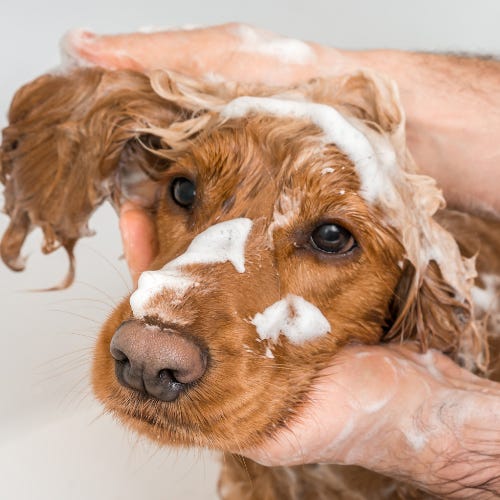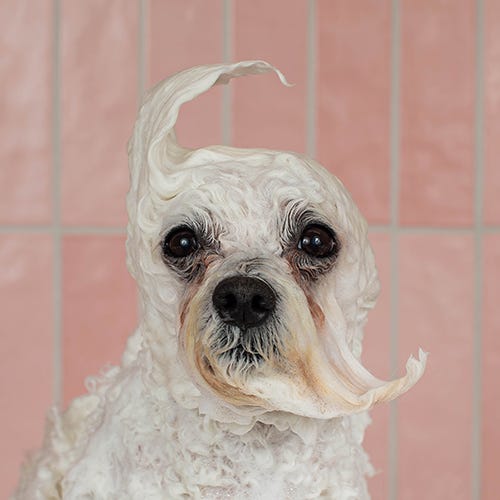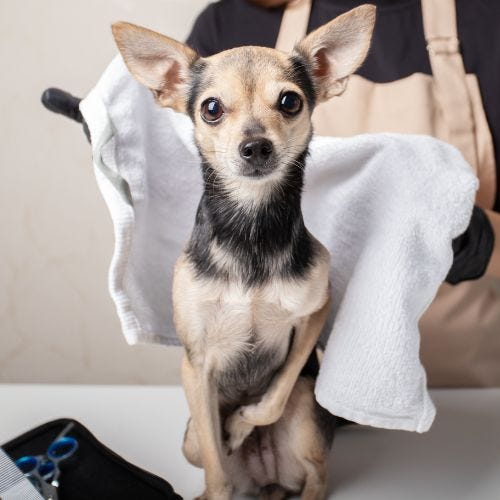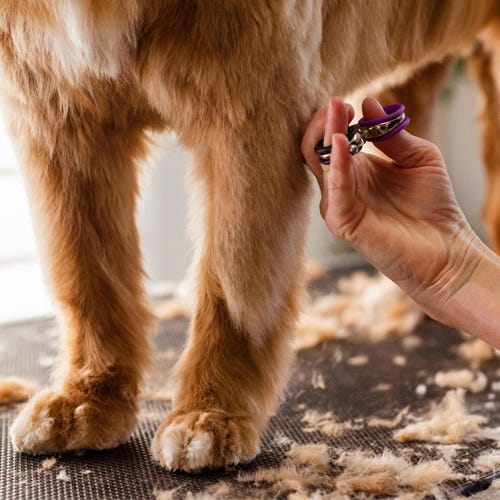Mixed-breed Millie trots in for her every six-week grooming appointment, and her owner hands you a bottle of shampoo from their veterinarian's office. "Millie is having an allergic reaction to something, and her skin is a mess. The vet told me to ask you to please use this." Here are some things you need to know when you use the prescribed product.
- Read the instructions. This seems obvious, but every brand is different, and understanding and following the manufacturer's instructions is essential. Depending on the shampoo, they will recommend how long the product should remain on the skin. If the product does not stay on the skin for the recommended time, it will not be able to do what it is intended for, and all that expensive shampoo will just go down the drain without offering any help to the pet.
- Use a "primer" shampoo first. Medicated products are good at performing the prescribed task, but they are often not all that great at cleaning and rarely leave the coat looking as good as a quality grooming shampoo does. The dog will look and smell better if you clean it with a mild shampoo first, and the medicated product will do its job better when it is applied to clean skin and coat.
- Chances are that the prescribed shampoo is either keratolytic or keratoplastic in nature. Keratolytic shampoos are designed to remove dead skin and debris from the skin's surface, which in turn encourages the skin to heal itself. Keratoplastic shampoos promote new skin cells to grow. Referring back to the first bullet point, the chemical ingredients meant to help heal the skin problem need time to do their work.
- Once the medicated shampoo has been worked down to the skin, wrap the dog in a thick towel to help prevent it from becoming chilled, and set a timer for the prescribed number of minutes of contact time (usually 5-10.) Guesswork has no place here.
- Rinse, rinse, rinse, then rinse again. It's never a good idea to leave any shampoo behind, and this is especially true of medicated products.
- Follow up with a light conditioner to replace the natural oils the shampoo has removed.
- Dry and style the pet as usual.
One last bit of information about medicated shampoos: pet owners often think that once one is prescribed, it should be used for life. This is rarely true. Once the skin problem the product was prescribed for has healed, using that shampoo could actually cause problems where none existed. You can help educate them or encourage them to ask the prescribing veterinarian for clarification.
Pro Tip: Since correct usage of these products takes extra time, it is common practice for groomers to add an additional charge to cover that. Most pet owners are very understanding about this.









